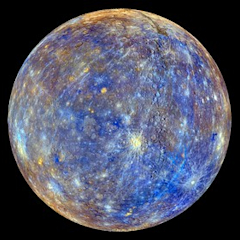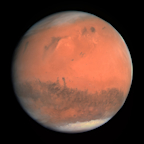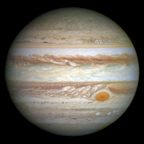Search results
Mercury is the first planet from the Sun and the smallest in the Solar System.In English, it is named after the ancient Roman god Mercurius (), god of commerce and communication, and the messenger of the gods.Mercury is classified as a terrestrial planet, with roughly the same surface gravity as Mars.The surface of Mercury is heavily cratered, as a result of countless impact events that have ...
The benefits of a better card. No security deposit, $0 fraud liability, cashback rewards - You earned this!
Mercury is the smallest planet in our solar system and the nearest to the Sun. Mercury is only slightly larger than Earth's Moon. Its surface is covered in tens of thousands of impact craters.
Jul 20, 2024 · Mercury, the innermost planet of the solar system and the eighth in size and mass. Its closeness to the Sun and its smallness make it the most elusive of the planets visible to the unaided eye. Because its rising or setting is always within about two hours of the Sun’s, it is never observable when the sky is fully dark.
Introduction Mercury’s surface temperatures are both extremely hot and cold. Because the planet is so close to the Sun, day temperatures can reach highs of 800°F (430°C). Without an atmosphere to retain that heat at night, temperatures can dip as low as -290°F (-180°C). Despite its proximity to the Sun, Mercury is not the hottest […]
Jun 9, 2023 · Mercury was also given separate names for its appearance as both a morning star and an evening star.Greek astronomers knew, however, that the two names referred to the same body, and Heraclitus ...
5 days ago · Using data from NASA's MESSENGER spacecraft, scientists have determined that the solar system's tiniest planet, Mercury, hides a not-so-tiny secret: a 10-mile-thick mantle of diamond.
Oct 19, 2018 · Named for the fleet-footed Roman messenger god, Mercury is the closest planet to the sun, zipping around our parent star at an average of 36 million miles away. However, Mercury’s orbit is not a ...
Solving the mystery of Mercury’s gigantic core would also help shape our understanding of the wider history of the Solar System.For example, it’s possible that Mercury was once larger until a giant impact — or just the bright young Sun’s radiation — threw off the planet’s outer layers and left behind mostly core.
May 15, 2022 · Mercury is the closest planet to the sun and the smallest planet in our solar system.With a diameter of about 3,032 miles (4,880 kilometers), Mercury is less than half the size of Earth, which is ...


















